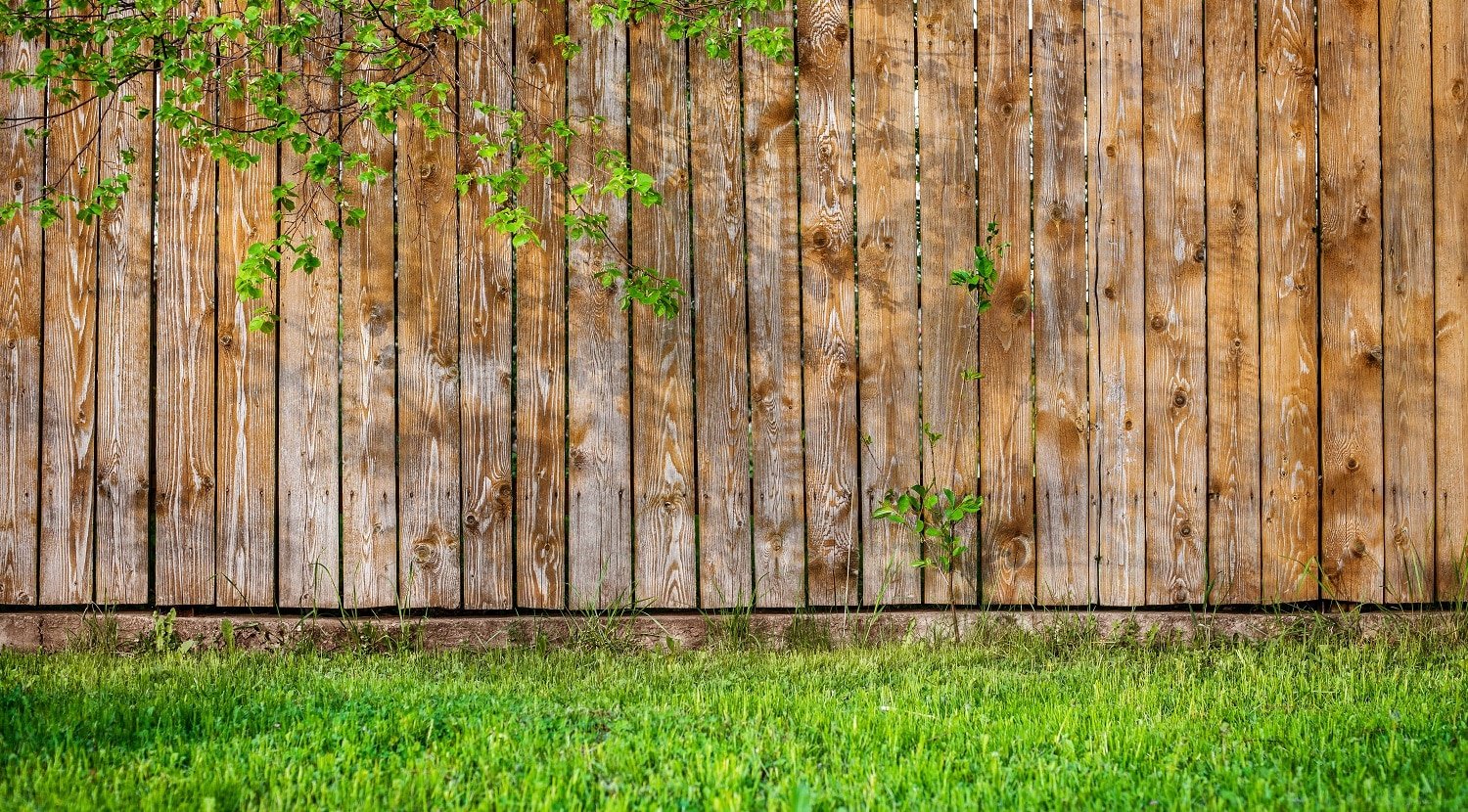Why should the fence look like a boring enclosure when you can stylize it to match the home decor? Sounds fun, right?-
A fence, like every other piece of construction, can reflect your penchant for all things aesthetic. That said, the ideal fence should not only look good but also serve the purpose of a barrier. Depending on your need and budget, you can experiment with different designs and material types, be it for the house front or the backyard.
That’s why we’ve put together this unique collection of fence ideas so you can pick one that’ll best suit your purpose.
But before we get started, here are some important things to consider.
Fence Common Materials
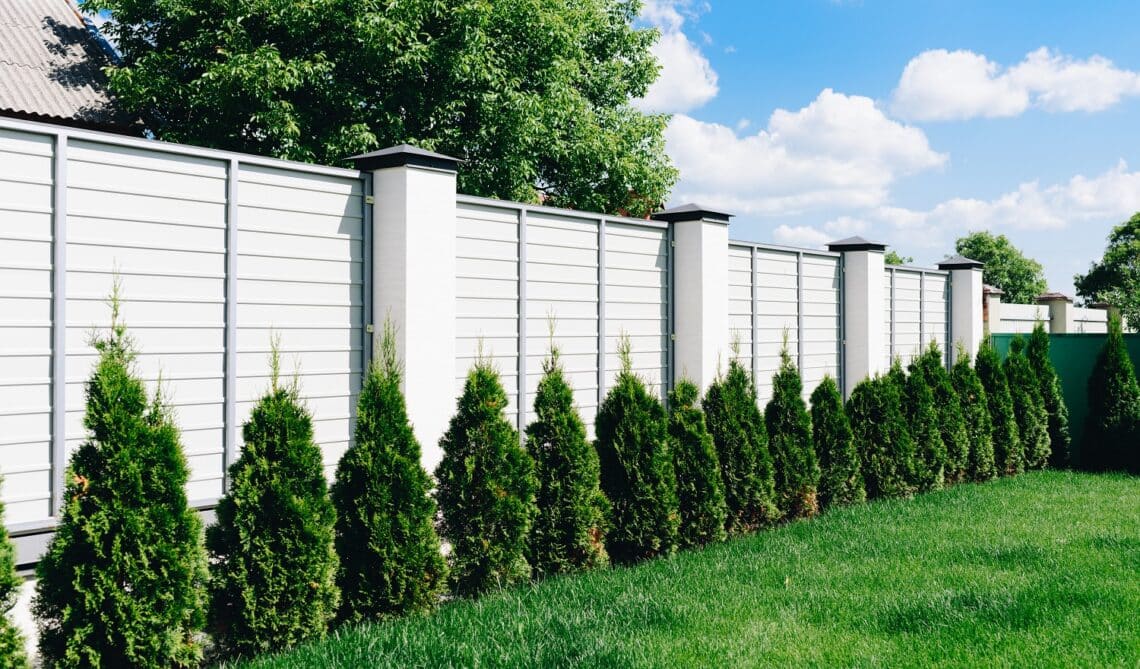
The most commonly used fence materials are wood, (western red cedar, to be specific) closely followed by vinyl. Take a look at this comparison for a clearer picture.
Wood v/s Vinyl
- Wood Fence
- Looks more natural
- Cheaper than vinyl
- Broken boards can be repaired
- Suitable for paints
- Challenging to maintain
- Vinyl Fence
- More styles to choose from
- Low maintenance
- Costlier than wood
- Entire panel has to be removed for repairs
- Once stained must be replaced
Other Materials Include:
- Iron
- Metal
- Aluminum
- Bamboo
- Glass
- Gabion
Buying Information
Like most home improvement projects, fencing, too, has a broad range in terms of cost. Typically, fence installation is priced per foot or meter. Hence, the longer it is, the more it will cost.
Likewise, if you opt for pre-built panels, you will have to pay per panel. The range in cost for panels is roughly around $40 to $300 for 6 to 8 ft length. Therefore, you’d have to spend $100 to $200 per 6 to 8 ft panel.
Break-up:
- 1 acre with 8 ft panels at $200/panel = 836 ft/8 X $200 = $20,900
- 1/2 acre = $10,450
- 1/4 acre = $5,225
Please note that the above estimation is based on a cost of $200 per 8 ft. The budget does not cover the cost of a paid installation.
Popular Fence Styles By Purpose
-
Garden

You can add a beautiful, decorative touch to your well-manicured garden by placing a low fence around it. While it may not serve the purpose of a protective barrier (it’s almost impossible to keep deer out of a garden), the perfect garden fence altogether enhances the garden’s look in the yard.
-
Decorative/Functional Combo

Our second variant is by far the most common way homeowners use fences. This creates a boundary and also keeps children and pets inside while keeping intruders and animals out.
-
Pool

If you have a pool, you’d want to put up a fence, be it around the property, or to enclose the pool. You can choose from several options, but here are the two most popular designs.
Also, check out this glass fence.

-
Privacy

Let’s say that privacy fences include all those fence designs that are relatively tall and sturdier than decorative options. They offer a solid wall and ensure privacy to the space it cordons off.
Top 11 Fence Styles
Fence styles are largely determined by the fence tops. But some are also classified based on the main section or how it fits together. Below are real-life photo examples.
-
Dog Ear

Dogeared fence refers to a conventional fencing style that’s cut at the top on a slant on both sides of the posts. The tips of the individual fence panels are cut at an angle, thus creating an appearance similar to a page in a book being turned under on the corner.
-
Gothic

The gothic fence design is a series of evenly spaced vertical boards with pointy tops. They are often used decoratively for domestic boundaries and don’t do much in terms of privacy or protection.
-
Flat Top

This is another delightfully simple, no-frills style, suitable for marking boundaries where a minimalist approach best enhances the venue. It’s the perfect choice for users looking for a strong and sustainable fence that appears pleasing to the eye.
-
Lattice Top

Lattice top fences add a subtle yet elegant touch to your outdoors, thanks to their unique design. They are usually made of cedar, natural whitewood, or pressure-treated pine. Typically featuring wide tops and bottom rails for stability, several models also include posts and post caps, showcasing a personalized appearance.
-
Privacy

A privacy fence acts like a reliable barrier that provides homeowners with seclusion from prying and nosy neighbors. It also acts as a sound barrier and reduces the intensity of traffic noises. Furthermore, a privacy fence is a sensible option if you have smaller children and pets at home, because they are sturdier and higher than other options.
-
Picket

This a very common fence variety, usually found in suburban homes. They look similar to gothic fences in terms of design and structure. The picket fence is shorter, featuring uniformly spaced vertical wooden boards. They are mostly decorative, but taller picket fences can work as protective fences to a certain degree.
-
Scallop

If you’re looking to install a new fence that’ll attract your visitors’ attention, invest in a scallop style option. The ornamental and unique design of this fence enhances the aesthetics of your living space and increases curb appeal.
-
Spaced Picket

The spaced picket, as the name suggests, is another picket fence type with wider gaps. They have a vintage, old-world charm that works well with new and old houses alike. If you’re looking to put up a pretty, neat-looking border around your property, this is a great option.
-
Shadow Box
The shadow box is a specific style of fencing constructed by attaching wooden boards in an alternating fashion on each side of the frame. It looks the same on both sides and offers more privacy than picket fences. It also lets light permeate at an angle, as it has minor gaps between the panels.

-
Rail
Unlike other styles, the rail fence is typically installed on farms and bigger properties. It features a horizontal design instead of vertical and uses lesser material per linear foot. Therefore, it’s a cheaper option, which makes it more viable for larger properties.

-
Gabion
The word gabion originates from the Italian word ‘gabbione’, meaning a big cage. A gabion fence is made with wire cages and rock (even though you can fill the wire cages with anything). They’re not a popular choice for homes but you’ll find them in modern commercial establishments and older buildings.
Take a look at this example.

Fence Photo Gallery
-
Wood Styles

This warm wood fence features attached lattice mounted greenery creating a chic and urban look.

This light natural wood model has an Eastern-style arch over the corner gate entry and lattice style detail on the top.

This is a classy privacy fence made of natural wood with brick posts in regular intervals, matching the yellow hued home.

Here’s another example of a rich, warm-toned privacy fence, including layered slats and a continuous horizontal top panel.

This contemporary lattice style comprises black stained wood posts and base accompanied with a lighter red toned body.

This high fence includes modern features like built-in shelving and light sources embedded across the surface.

This is a light, non-stained wood variety with ivy artfully laid on creating a rustic vibe.

Formal looking privacy design featuring an upper lattice work design

This wooden variety layers posts with rounded tops for an utterly opaque appearance.

This is a unique take on the waist-height version, featuring an attractive cross-hair box style in smoky grey and a double-swing entry.

Another layered structure made of rough natural wood, including interior posts.

This light natural wood privacy fence adds a striking background to the lush lawn.

This is a typical garden variety with widely spaced posts and hooks for gardening tools.

Layered privacy example featuring darker natural wood with wide beige concrete pillars at uniform gaps.

This is a classic untreated wood-style, including layered posts with lattice style top section.
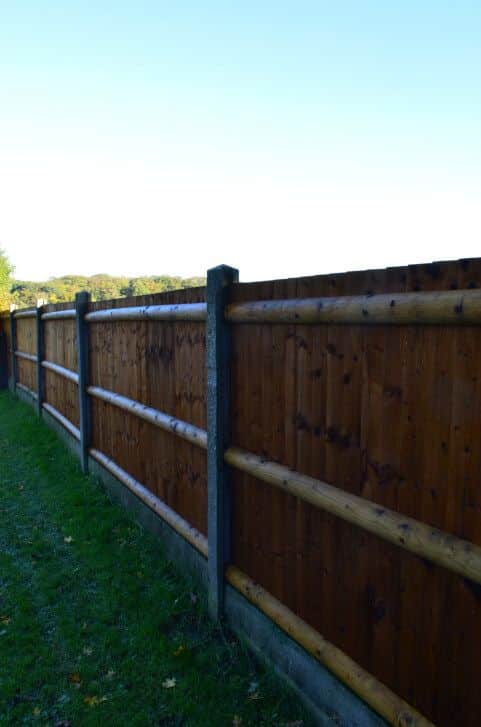
This multi-hued variety is a shindig of curved horizontal beams and natural wood posts between black pillars.

This traditional example comes in light natural tones, with cut-corner post tops.

This privacy fence is in natural unstained wood featuring a top horizontal layer.

Here is a rounded post lattice version featuring a latching gate at the center, ideal for off the grid properties.
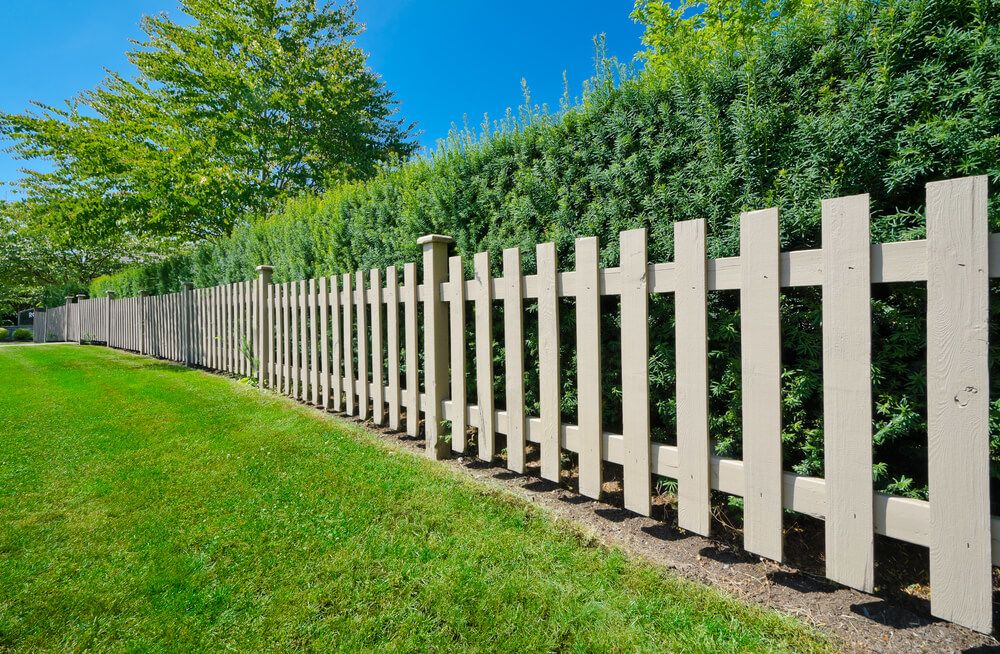
Conventional picket type in light brown.
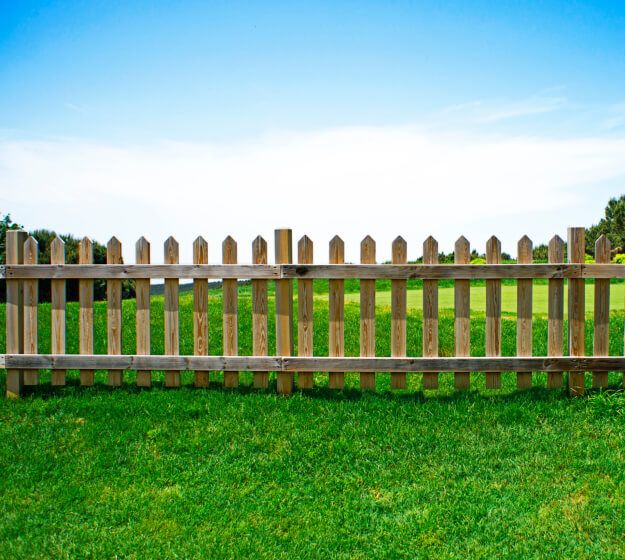
This wood example includes natural wood posts with angled tops.

Here’s another sparse, natural wood garden style fence.
-
Some Vinyl Designs
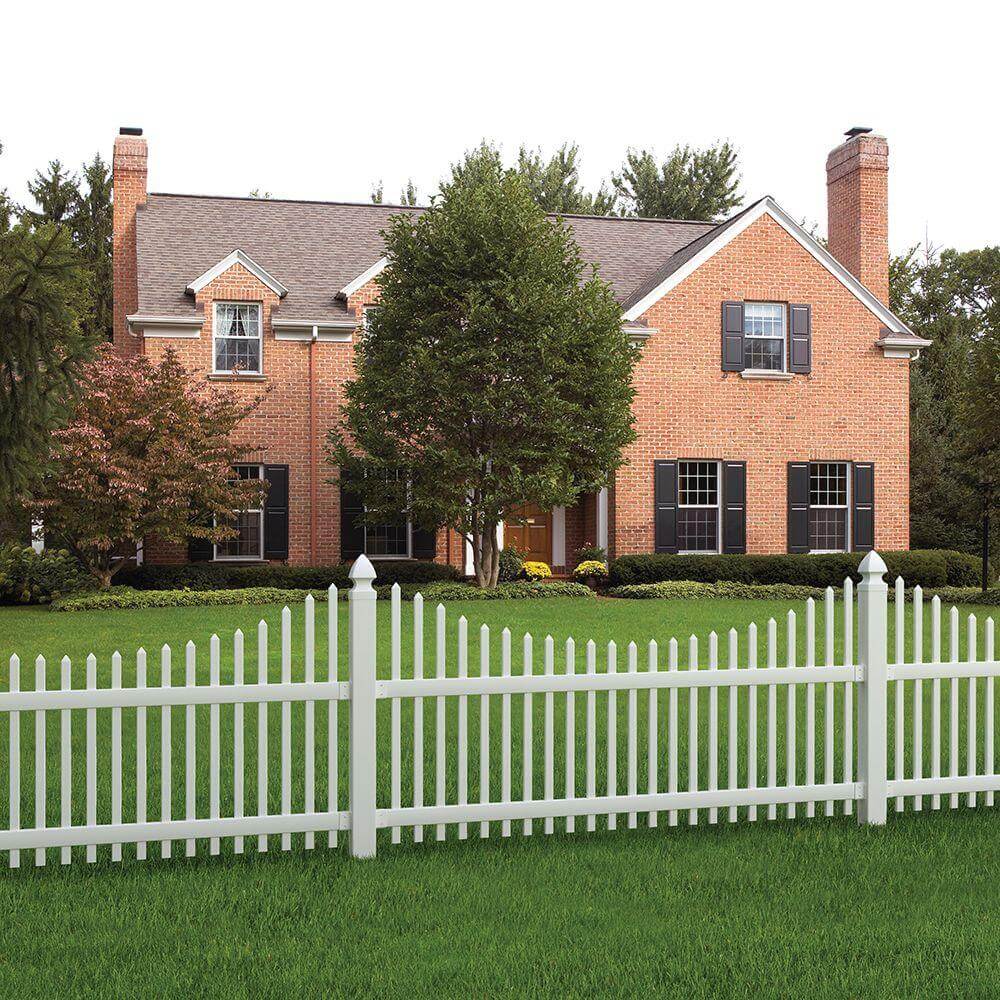
This is a white vinyl scallop-topped, picket variety which is an ideal arrangement for front yards.
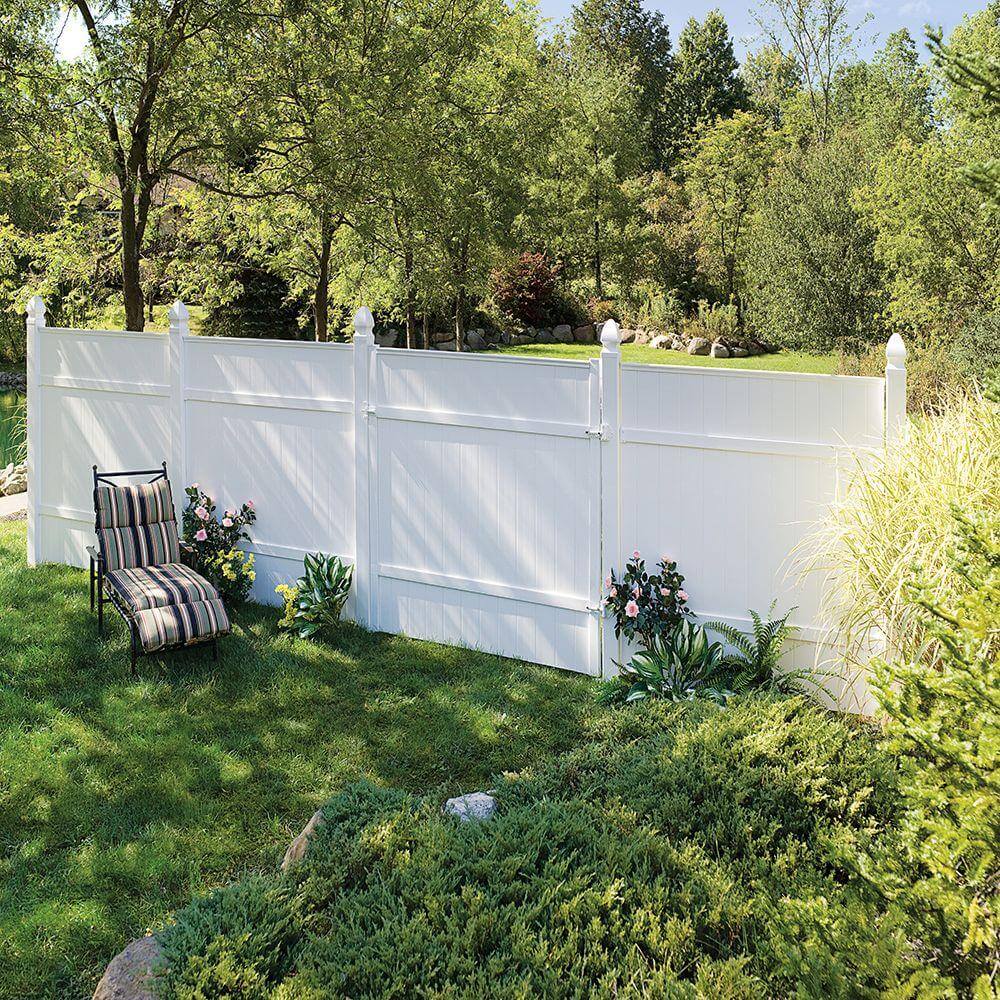
Here’s an excellent example of a white vinyl privacy fence. Built using panels, it could easily be extended as per requirements.
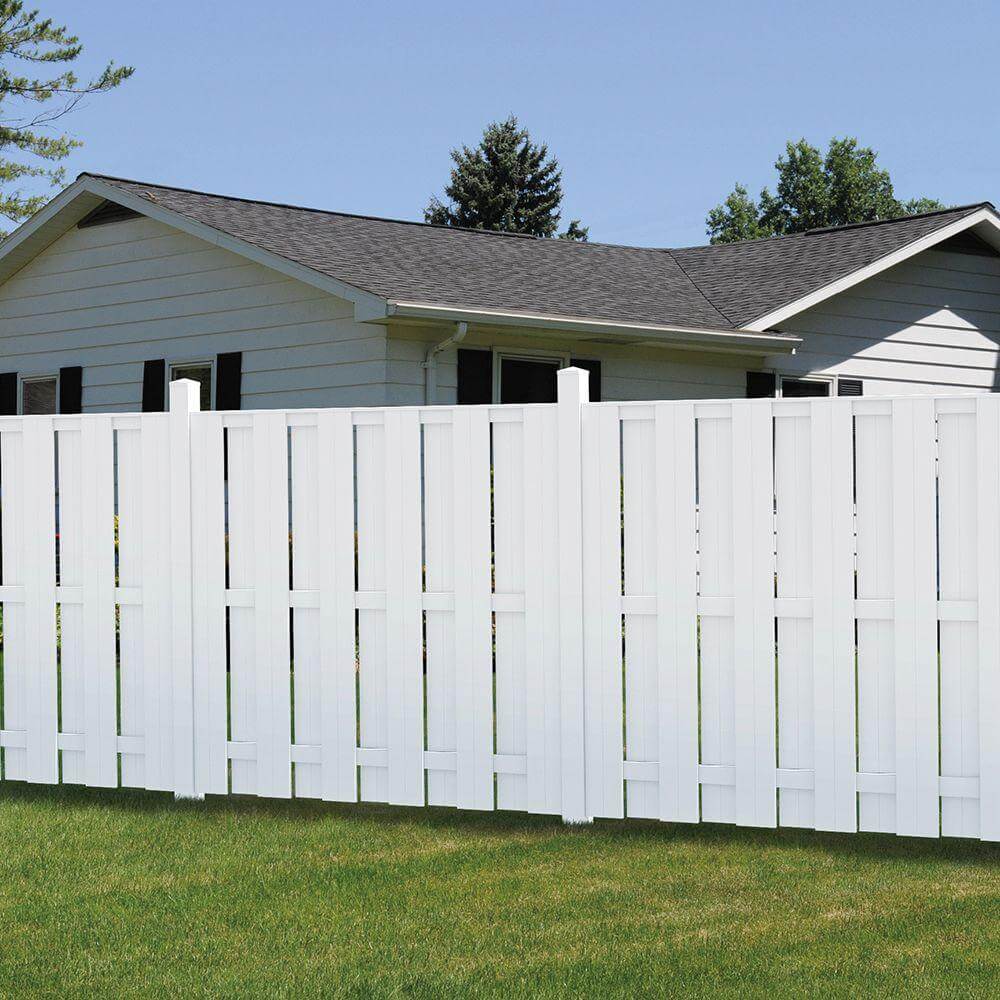
This one is a typical white vinyl shadowbox style.
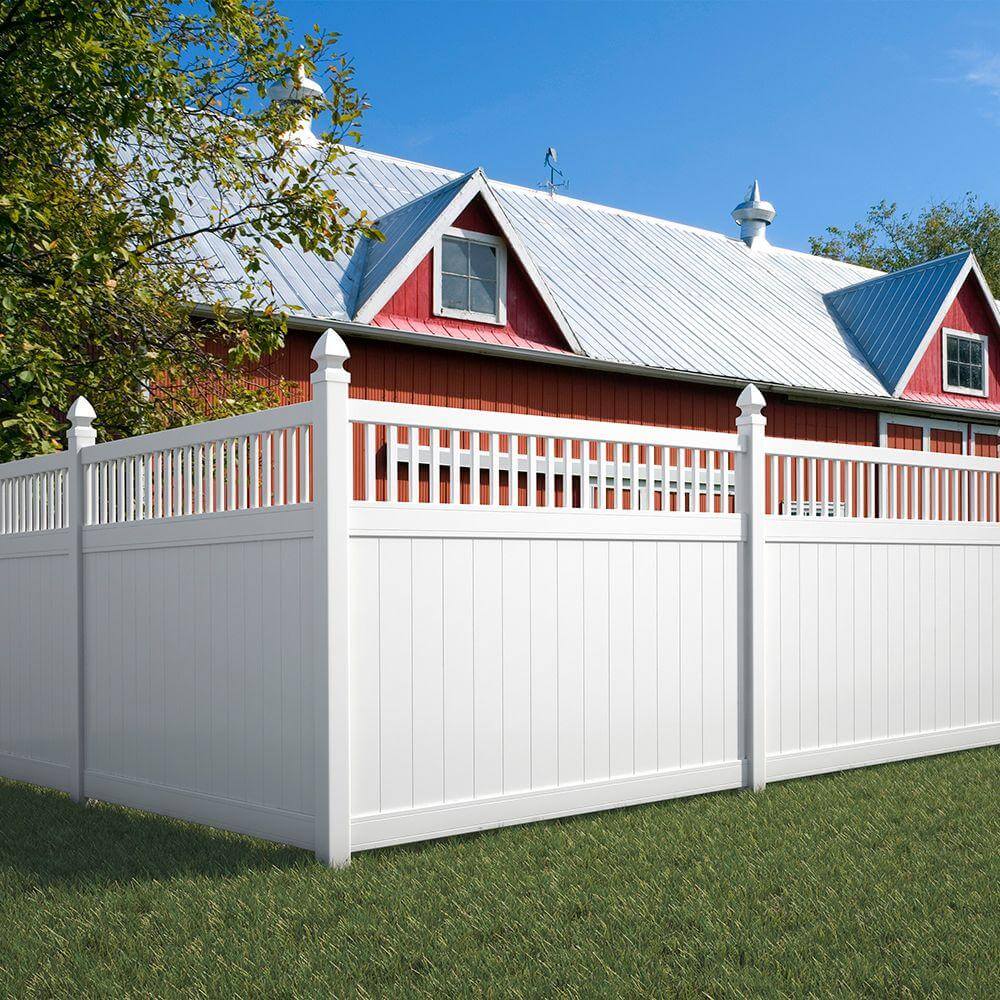
Above is a vinyl closed picket design that provides both security and privacy.
-
Hewn Log and Branch
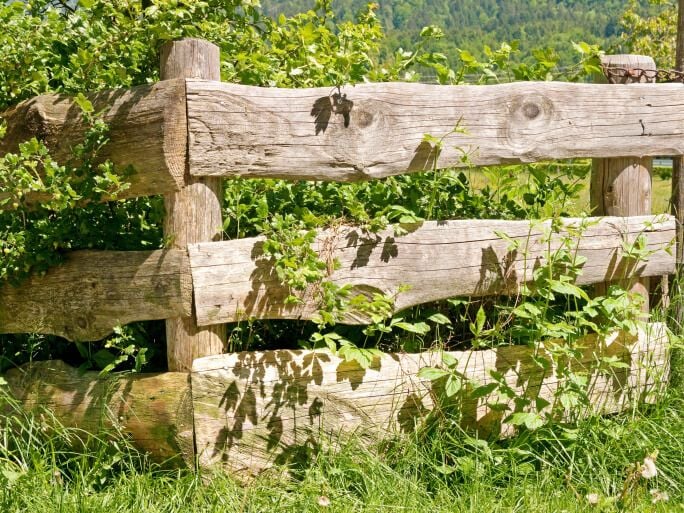
Above hewn log features three thick horizontal beams and cylindrical posts.

This variety includes naturally warped cross-posts, typically found in country-side properties.
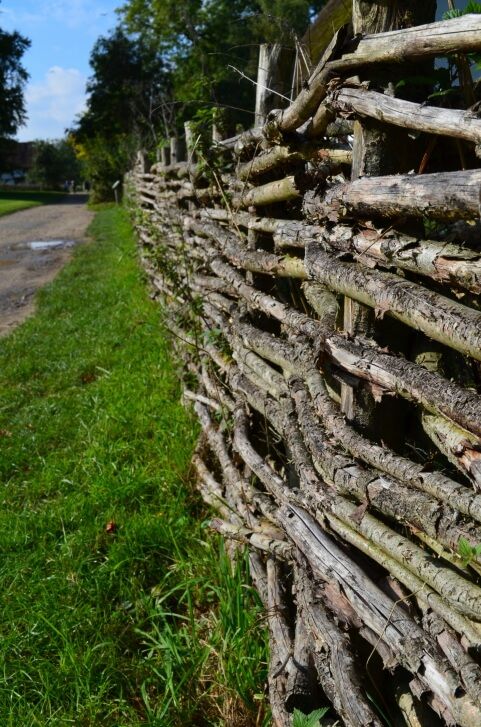
Natural branches, featuring untreated wood along with bark remaining, for a dense look with minimal gap.
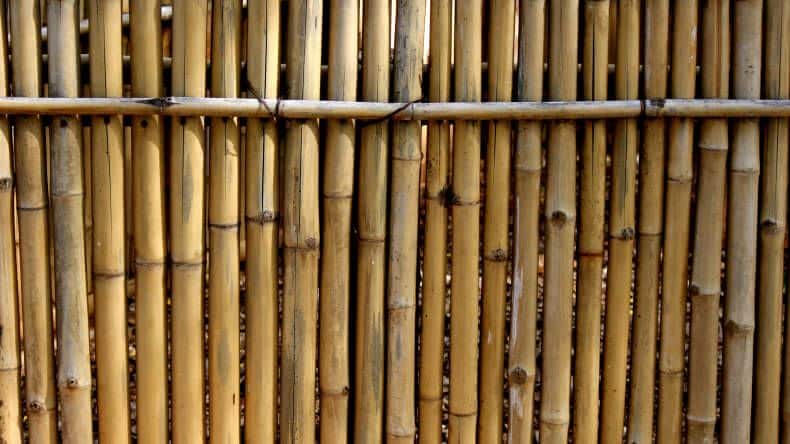
Here’s a natural bamboo arrangement with minimal gaps.

Above is a combination of horizontal branches and hewn log upright posts.
-
White Fence Varieties
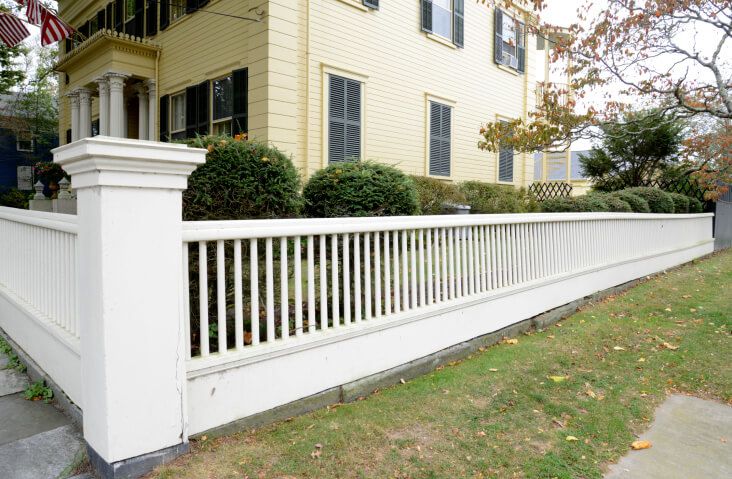
Here we have a low slung white option with evenly spaced cylindrical beams sandwiched between stocky horizontal beams and full-size square posts at the corners.

Here we have a gorgeous white picket fence with cylindrical posts and bright flowers in between the spaces.
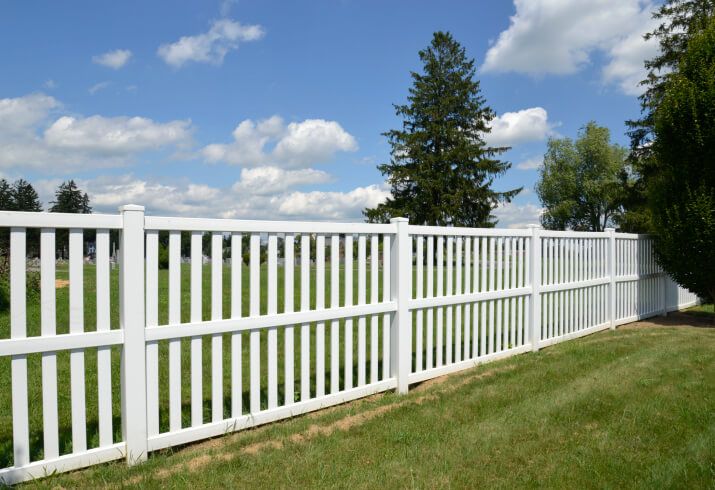
This example has sparse posts that are bookended and attached with a horizontal wood beam in the middle for a pronounced look.
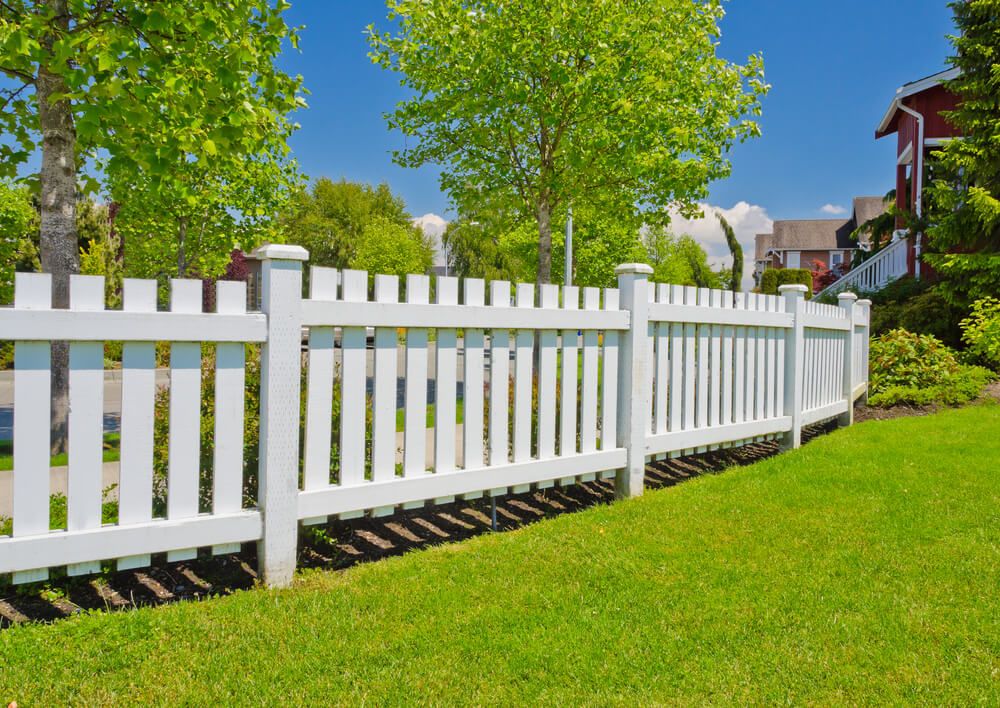
This popular picket style is raised several inches off the ground, features trapezoidal caps on each dividing post.
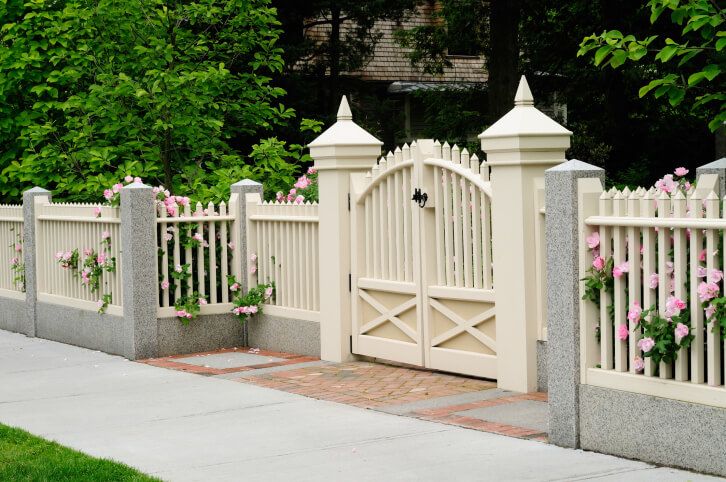
This pristine white fence looks straight out of a Disney castle. Featuring spiked tops and marble framed lower structure, this adds an elegant touch to your outdoors.
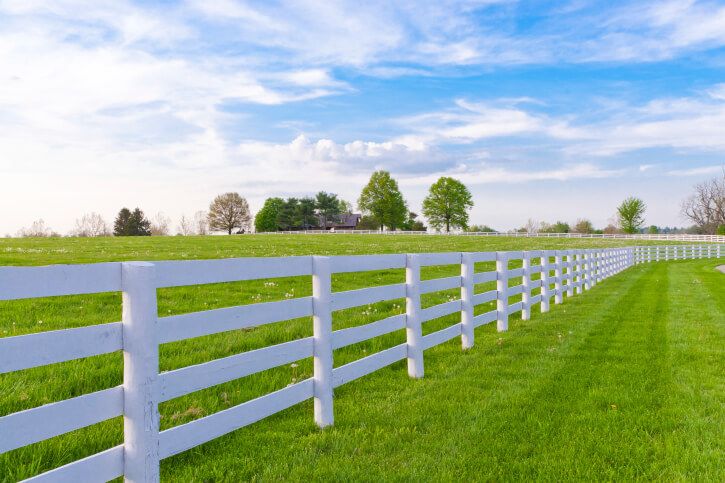
Above is a waist height version with cylindrical pole-style vertical posts and four horizontal widely spaced slats. This is typically found in farms and bigger properties.

A traditional white picket concept, including rounded post tops.
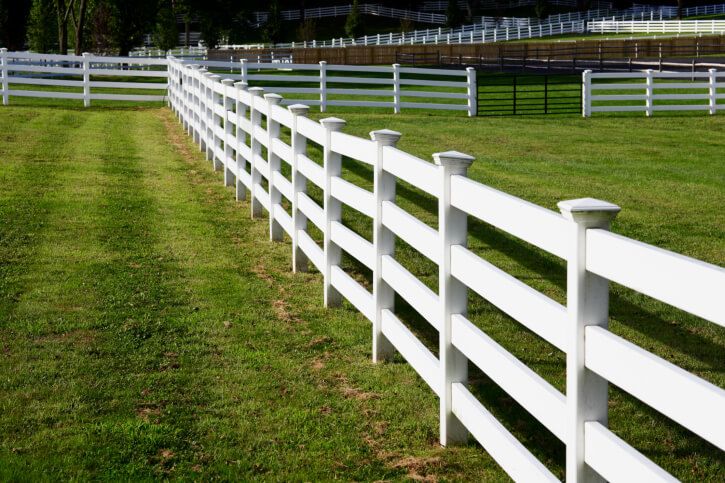
This is another four-slat white variety, with sizable vertical posts topped with pyramid shape caps.
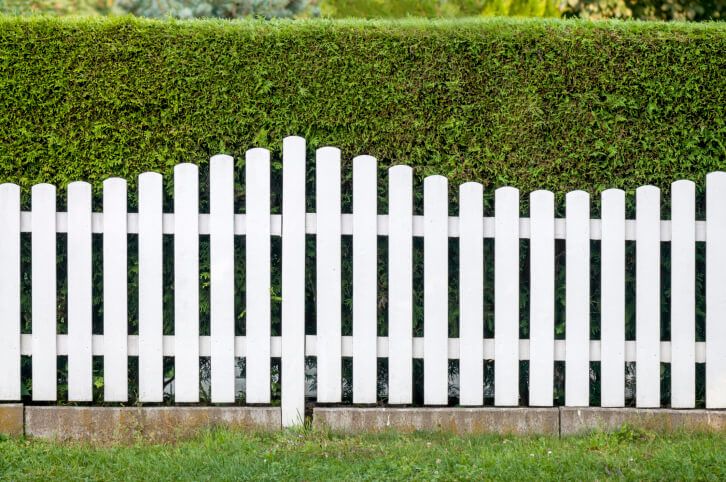
This wave-version has posts arranged at multiple heights, perched over a concrete base, against a neatly pruned bush wall.
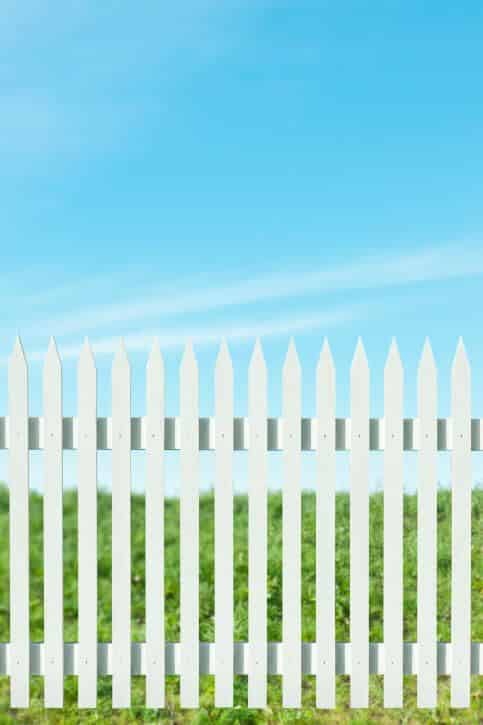
Narrow post, spike-topped example.
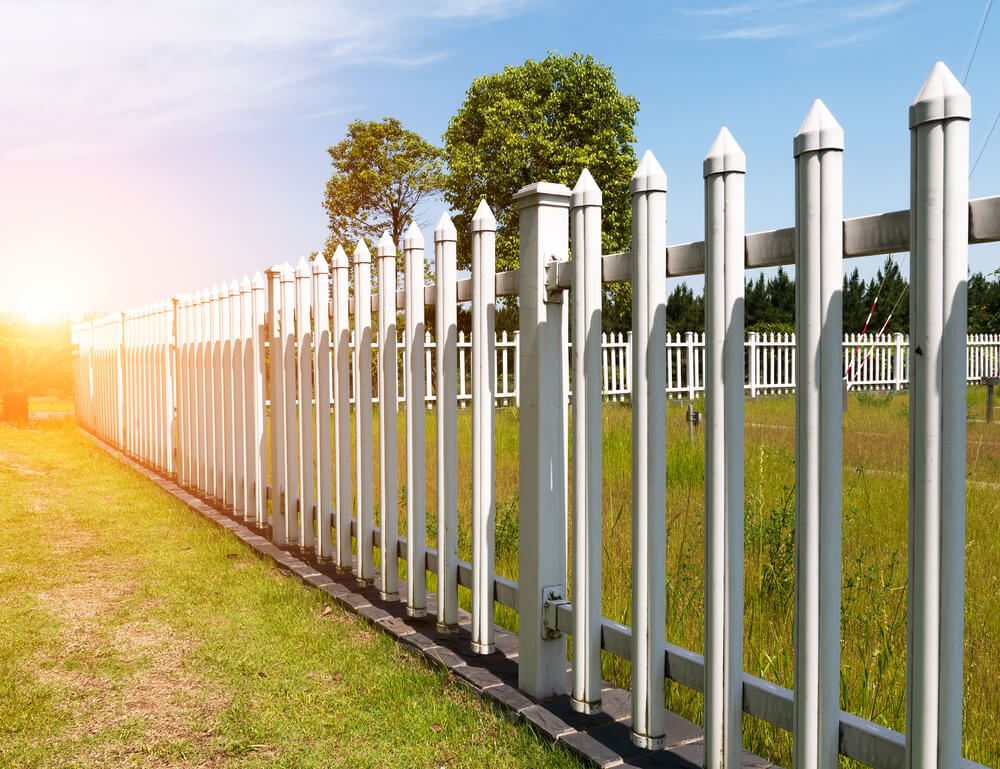
This has cylindrical posts with spiked caps joined by two slender horizontal beams, all held together by a brick base.

Rounded spike top white fence example features a large flat arch over the gateway.
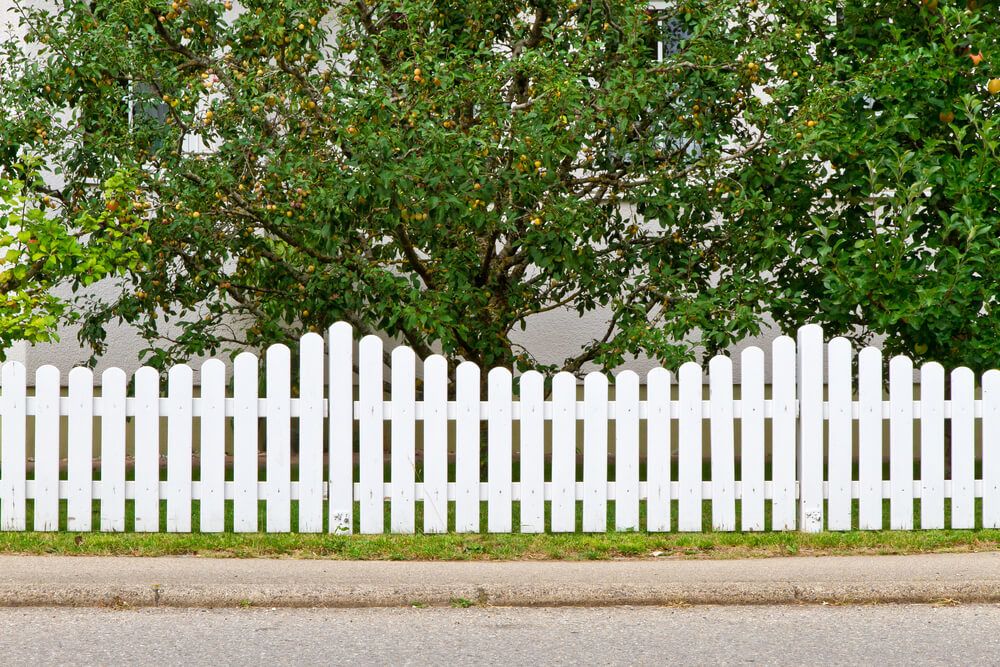
Here’s another wave-like white picket with curved heads and rounded post tops.
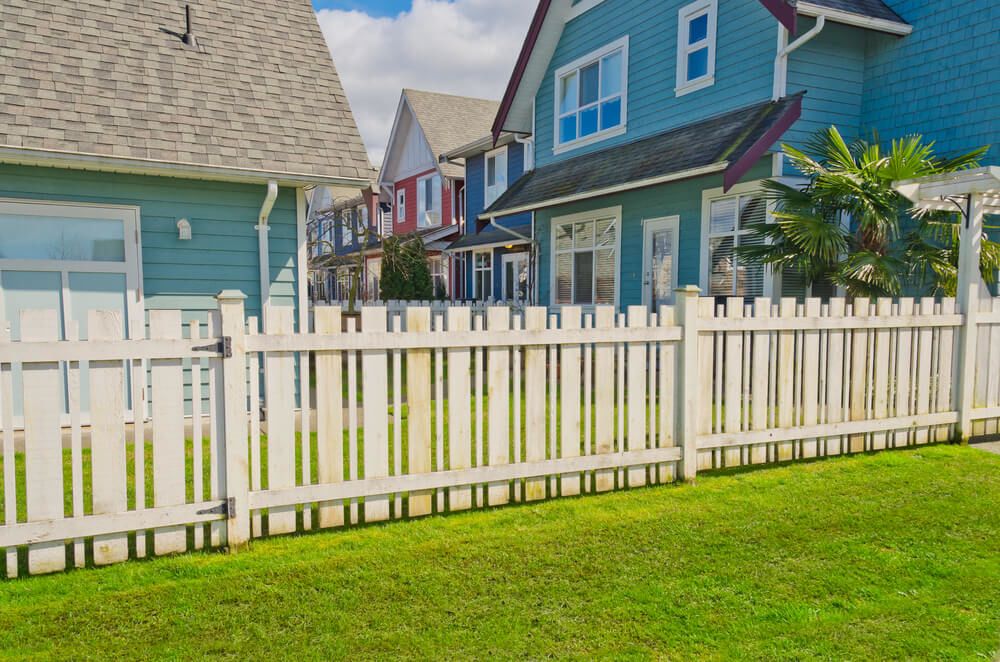
Off-white fence features unique elements, including slender posts sandwiched between wider slats. Looks rustic yet classy.

Spike topped, thick post picket fence featuring sleek gaps.

This wide-spaced option features two slat heights, with rounded tops between slender dividing posts.

This super minimalist number looks so proper with uniform flat-topped posts and zero gaps.
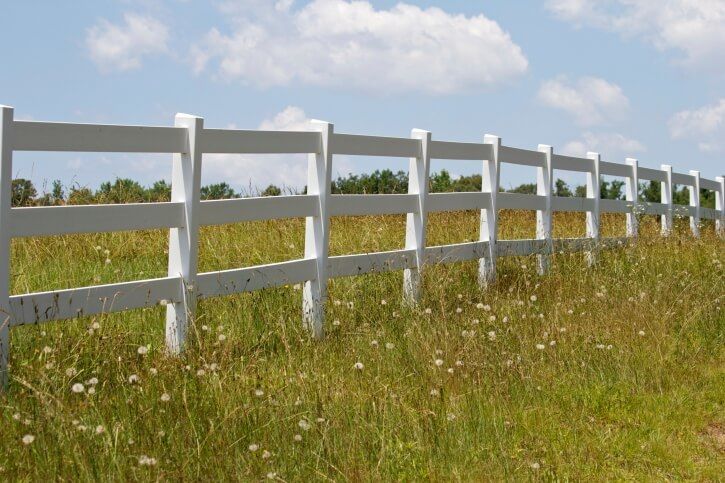
Here’s a typical farm style white fence with three widely spaced horizontal beams.
-
Other designs
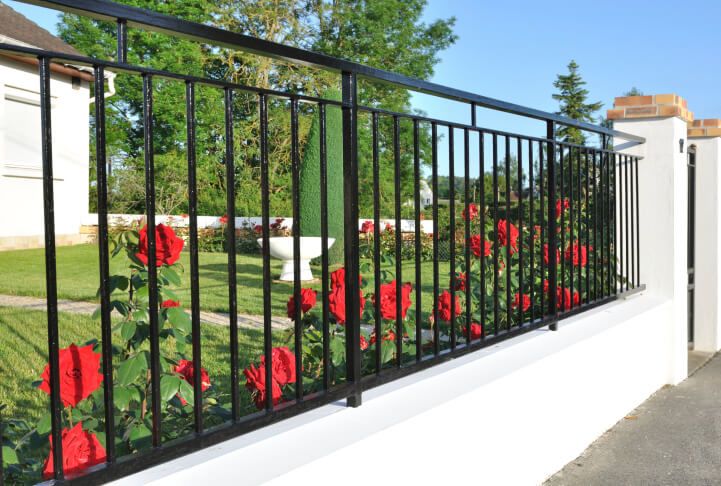
This fence features black metal stands on a white concrete base and has a large brick-topped gate at the corner.
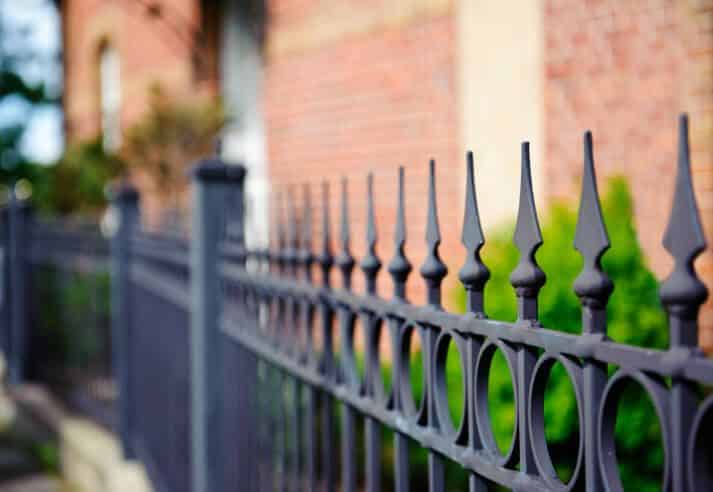
This wrought iron design includes spike caps and circular flourish.
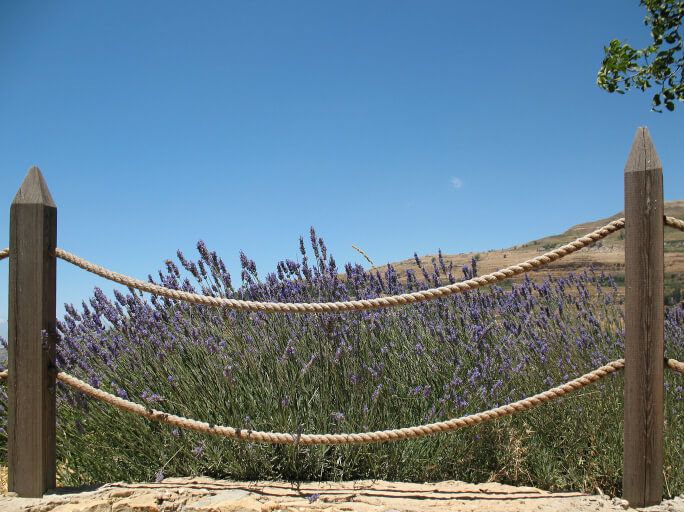
These dark wooden posts are connected by minimalist rope ‘beams’. It does nothing for security and is meant for aesthetic value only.
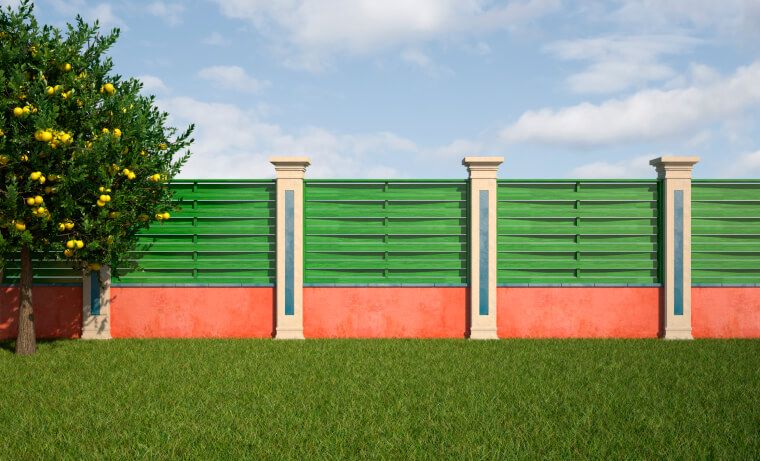
Here’s a brightly colored fence that features a green layered wood upper section perched over a brick-topped red concrete base. The whole arrangement is divided into uniform segments by beige pillars with blue stripes in the center.
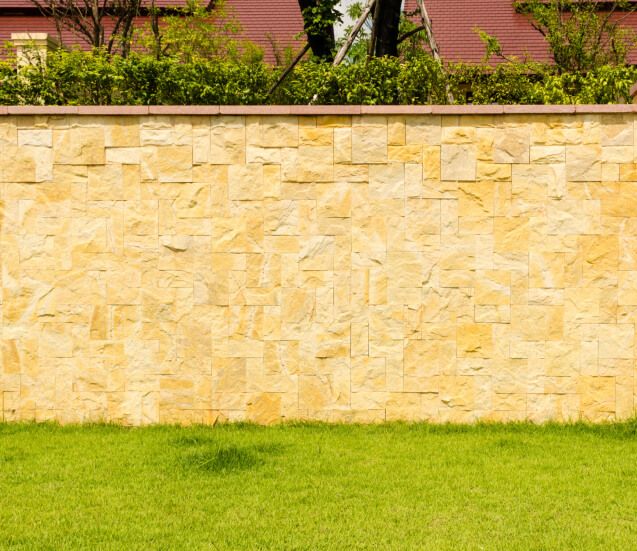
This intricate, uneven brick design in yellow tones is perfectly topped with flat red bricks and greenery, thereby creating a chic look.
Chain Link for Backyards
To be honest, chain link fences are not the ideal option for homes, be it for the back or front yard, simply because they look quite clumsy and unappealing.
However, you could make it appear more flattering by concealing the chain link with a hedge, as shown in the photo below (you could also run the hedge all the way). If you have smaller children or pets at home, the chain link fence is a safer option as it adds another layer of protection.
It can also be easily hidden among an overgrown hedge, so if you want to avoid that wired look altogether, a bushy green exterior will do the job.

The following photo shows another backyard with a chain-link fence. While it may not be the first choice among homeowners, it looks a lot better with the garden and the decorative elements.

Bamboo
Bamboo fences have become widely popular mainly for their low price and durability. That said, a bamboo screen can transform your garden, yard, or patio into a cozy and exotic outdoor haunt.
Usually, bamboo fencing is available in either rolls or panels. The former is suitable for concealing an existing wall, mesh panel, or wooden fence. On the other hand, bamboo screens are best used as freestanding fence panels or partitions to create more privacy between two yard spaces.
Regardless of the style you pick, the oriental appeal is unbeatable and will surely attract visitors’ eyes.

Here is a picket style fence with thin bamboo beams and wooden posts in between. The white flowers on the front amp up the overall decor and create a vibrant look.

This style has a sturdy opaque bamboo wall that provides both privacy and security. To break the monotony, a low row of bamboos of multiple heights are lined in front of the wall. The two-tiered look adds more depth, which is far more visually appealing than the flat look.
Split Rail
Split rail fences feature a zig-zag style arrangement that consists of three to four rows of horizontal fence posts. These rows are supported by vertical beams every few feet. Split rail fences are typically made of wood or vinyl. While wood is the more affordable of the two options, vinyl lasts longer and requires less maintenance.
These are often found surrounding acreages, grazing areas, parks, and large properties. Their rustic look is quite appealing as they seamlessly blend with the natural landscape. Split rail might not be a suitable style for privacy, but it’s ideal for keeping large livestock on the property.
The following are a couple of split rail examples.
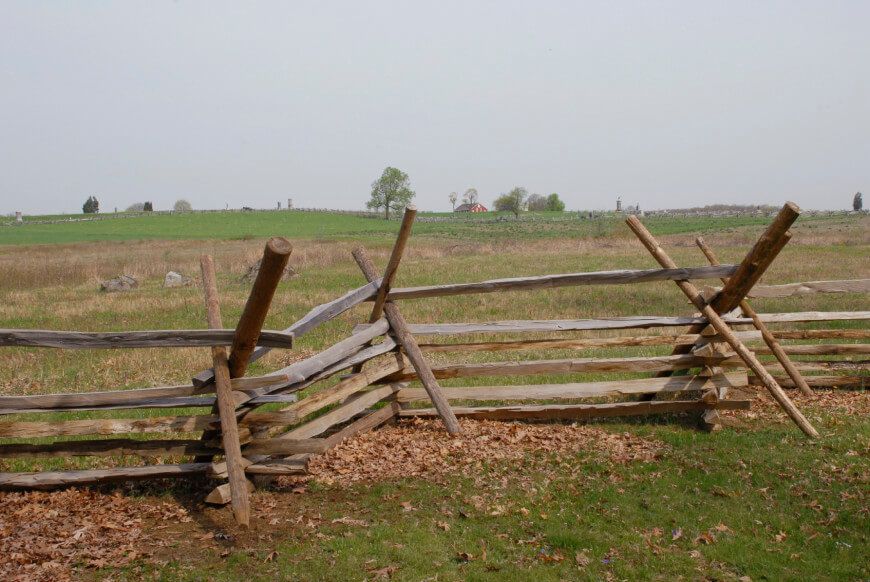
Here’s a warm wood split rail design typically used to demarcate the land boundary.
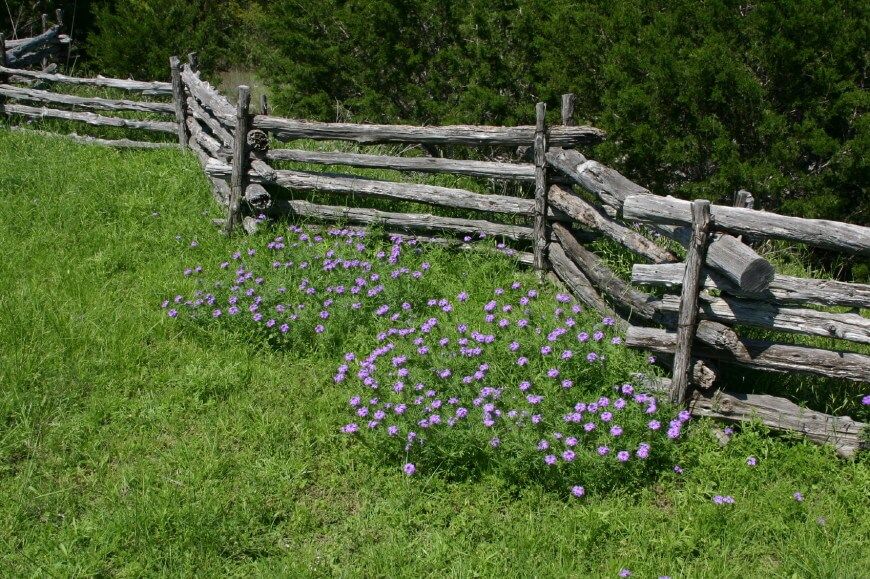
Above is another untreated wood design placed at the edge of a field.
Frequently Asked Questions
Below are answers to some common questions about fences.
How Long Does Wood Fencing Last?
That entirely depends on the type of wood and whether it has been treated. Usually, the wood varieties used for fences include cedar, pine, and spruce. The lifetime of untreated cut cedar is somewhere around 15 to 30 years. However, if it’s treated and resealed as required, it may last as long as 40 years.
In the case of pine, it’ll last near about 10 years untreated. Treated and maintained, it may sustain up to 20 years. Conversely, spruce wears more rapidly, lasting about 5 years untreated. But, when treated and maintained, it can also stay in use for about 20 years.
How Long Does Vinyl Fencing Last?
Vinyl, undoubtedly is one of the most durable materials available used to build fences. When installed correctly by a trained professional in vinyl fencing, it should last for at least 30 years. Nevertheless, the fence must be cleaned and maintained regularly. Some vinyl fences also come with a lifetime warranty, making them a better investment in the long run.
Can Fences Be Repaired?
Firstly, yes. Naturally, since fences are constantly exposed to the elements, pollution, animals, etc., they incur damages over time and require maintenance work. Both wood and vinyl fences can be repaired in case of damage. However, vinyl outlasts wood, and the latter can only sustain so much damage until it needs to be replaced altogether.
Can Vinyl Fencing Be Washed?
Here’s the good news. Not only can they be washed, but it’s also the best way to maintain the fence’s appearance for longer. Furthermore, washing prevents the growth of mold and mildew in nooks and corners where moisture can settle.
While pressure washing is the most effective way to clean a vinyl fence, you can also use some soapy water to get rid of the dirt accumulation. Ideally, you should clean a vinyl fence at least once a year to retain its beautiful look.
Can Vinyl Fencing Be Painted?
Usually, vinyl fencing does not require repainting as long as it is adequately maintained. Regardless, it’s quite simple to paint if the need arises. You’d want to start with a clean, dry surface, so get rid of all dirt, grime, and moisture. After that, apply one generous coat of primer, ideally something that has a mold and mildew resistant formula.
Follow it up with an epoxy-based exterior paint, and put at least two coats, if you are changing the fence color. The last step would include coating the fence with a sealer for added protection and more sheen.
Can Vinyl Fencing Be Screwed Into?
You may drill holes into the vinyl, but that requires a certain skill level as it’s more challenging than drilling into wood. For starters, you would need a professional-grade drill with a set of reliable bits. Also, make sure to use stainless steel screws. Plus, you can even buy vinyl caps to cover the exposed ends of the screws for a uniform appearance.
Do Fence Posts Need Concrete?
Even though gravel works fine if you have heavy, densely-packed, clay soil in your area, using concrete continues to be the most effective way to set and strengthen fence posts. It keeps the structure secure and prevents it from leaning over.
Can Raccoons Climb Vinyl Fencing?
Raccoons make every attempt to climb across any barrier if they are hunting for food on the other side. However, they cannot climb a vinyl fence as they are not as agile as cats when it comes to jumping.
But they have sharp claws and are adept at climbing. So if you keep anything stacked near the vinyl fencing, they can use it to scale the height.
Can Cats Climb Vinyl Fencing?
Cats are usually unable to climb high fences, but they can jump over it if they have a leaping pad close to the fence. But they can get to the other side if the fence is too low.
Can Vinyl Fencing Be Recycled?
Yes, it’s fully recyclable. Even the sawdust that’s left behind after cutting and installing a vinyl fence can be reused. Long story short, vinyl fencing is made from PVC, a type of thermoplastic, meaning it can be melted and used for different purposes.
What Materials are Fences Made From?
Wood and vinyl are among the most common materials used in the assembly of fences. Other than that, chain-link fences are also an economical option for enclosing an area, providing higher security. Besides, fences are also made of wrought-iron, aluminum, and bamboo. Therefore, depending on your budget, you can select the material that’ll best serve your purpose.
Can Used Fencing Be Sold?
Just like every other item, fences can be sold too. Thanks to the ever-expanding popularity of social media channels and buy-and-sell websites, the virtual space has become a market where you can find anything for a good deal.
Since vinyl fencing lasts longer, it’s unlikely to find used fences for sale. But it is quite common to see used wood fencing for sale, mainly because someone is always upgrading to vinyl.
What Type of Fencing is Suitable for Chickens?
The need for fencing is two-fold when it comes to creating a barrier for chickens. Firstly, it’s used for making an enclosure to keep them contained, and secondly, it protects them from predators. Moreover, since chickens can fly, the fence has to be at least 6 ft high to keep them from escaping.
That said, wire fencing is the best option for chickens as it’s quite durable and provides superior protection against animal attacks. Sometimes, vinyl lattices are installed on the fences’ bottom lining for improved stability and aesthetic appeal.
What Type of Fencing is Suitable for Goats?
Goats are frolicky, curious, and quite jumpy, making it a tad bit challenging to control them. Therefore, building a fence that’s tall and sturdy enough to contain them while also protecting them from predators is quite essential.
That’s why wire and chain links are usually used to hold back goats as long as the openings aren’t wide enough for them to get their heads or horns stuck. Whereas, electric fences are used for especially aggressive ones. Apart from that, you can also use 3-rail vinyl fencing lined with electrical wire to keep your goats safely inside the property.
Who Invented Vinyl Fencing?
Fences have been around since the dawn of time, and gradually the material used to create a barrier also evolved. Initially, fences were put up by stacking stones, but later on, wood and other materials were also used.
In 1873, Joseph Glidden invented barbed wire fencing as a more effective means of controlling livestock while demarcating property lines and keeping out predators.
Moving forward, World War II brought about drastic changes in industrial production processes, primarily because several useful alloys like aluminum were no longer available. Around this time, PVC was developed to be used for piping.
If we had to trace the invention of vinyl fencing, it would take us back to the farmers who discovered the benefits of lining PVC pipes for containing animals. Thereafter, these makeshift fences caught the attention of bigger manufacturers, leading to the advancements in vinyl fencing that we find today.
When was Vinyl Fencing Invented?
Vinyl fencing came into existence sometime around the late 1970s, when it was mainly used to replace wooden 3-rail fences, typically used on farms to contain livestock. However, its discovery was somewhat accidental. Farmers would usually acquire vinyl pipes from irrigation pipe manufacturers at a minimal cost or for free and began using them instead of the traditional wooden posts and rails.
The idea quickly garnered a lot of popularity, and now vinyl has become one of the primary materials used for fencing, be it for both homes or businesses. Plus, it has a longer life-span, which makes it a more option.
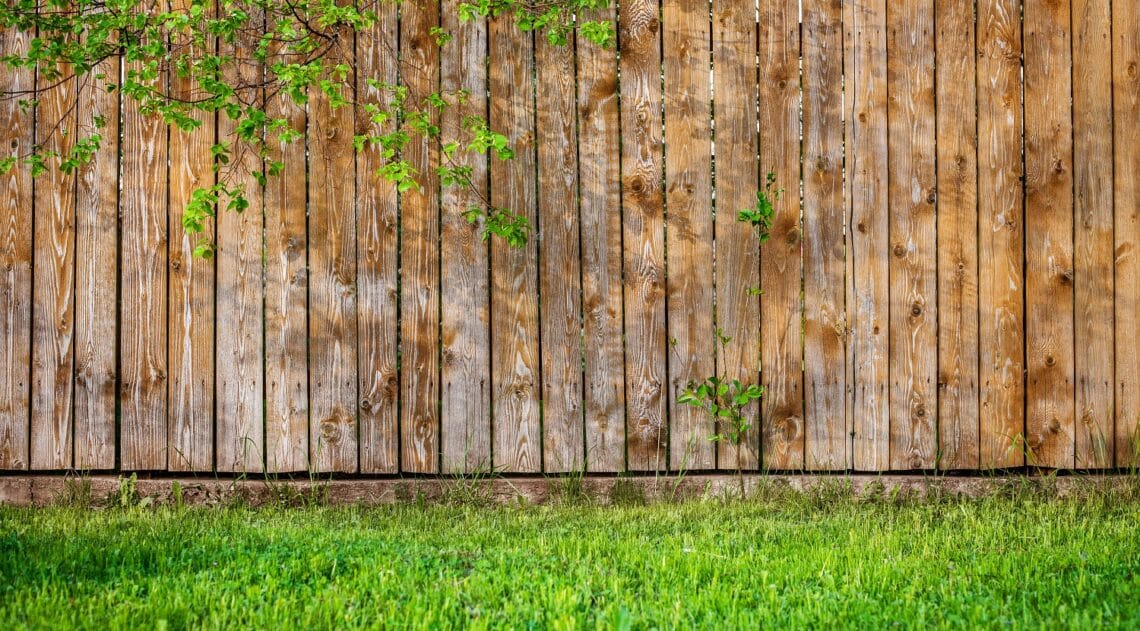
Conclusion
As you can see, some of these backyard models are intricately designed with carved wood or metal layered upon brick or concrete bases. Whereas, others at the opposite end of the spectrum comprise natural sticks or barely carved, untreated logs, evoking a pastoral look and feel.
While some are constructed for the sole purpose of privacy, ensuring zero gaps and additional inches height-wise, others feature wide post gaps and artistic designs that compliment the home decor. Every single option in this guide is a unique expression, highlighting the evolution of the humble fence in recent times.
If you strongly believe that good fences make good neighbors, pay more attention to the style, material, and durability of a particular model. This way, you can create a signature look that stands out in your front or backyard.
That’s all for now. Keep experimenting with these styles and personalize your boundary with a uniquely designed fence.
Till next time!
Related Articles
29 Curb Appeal Landscaping Ideas That Will Transform Your Home
33 Brilliant Home Fence Gate Design Ideas to Protect Your Home in Style
29 Curb Appeal Landscaping Ideas That Will Transform Your Home



